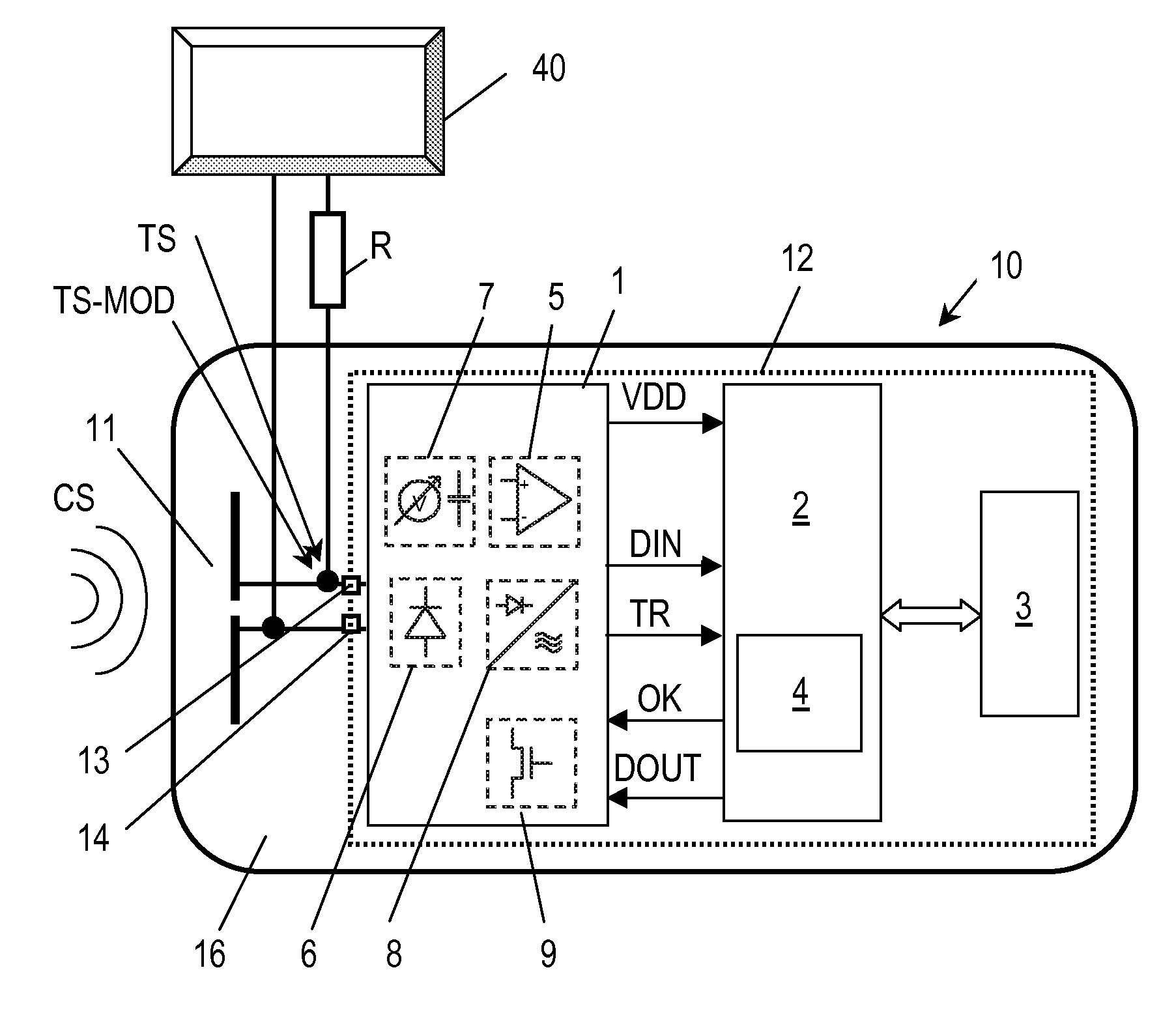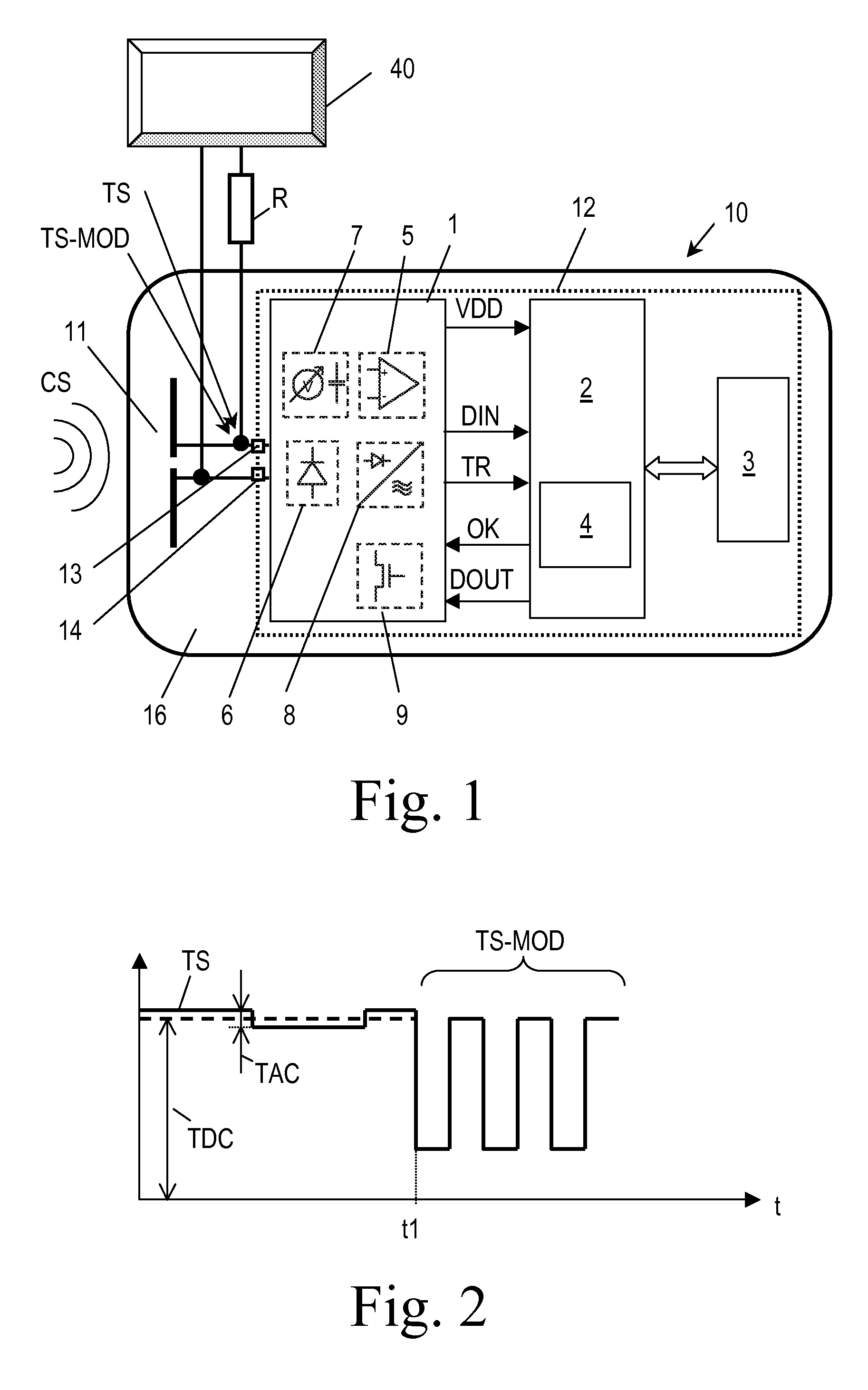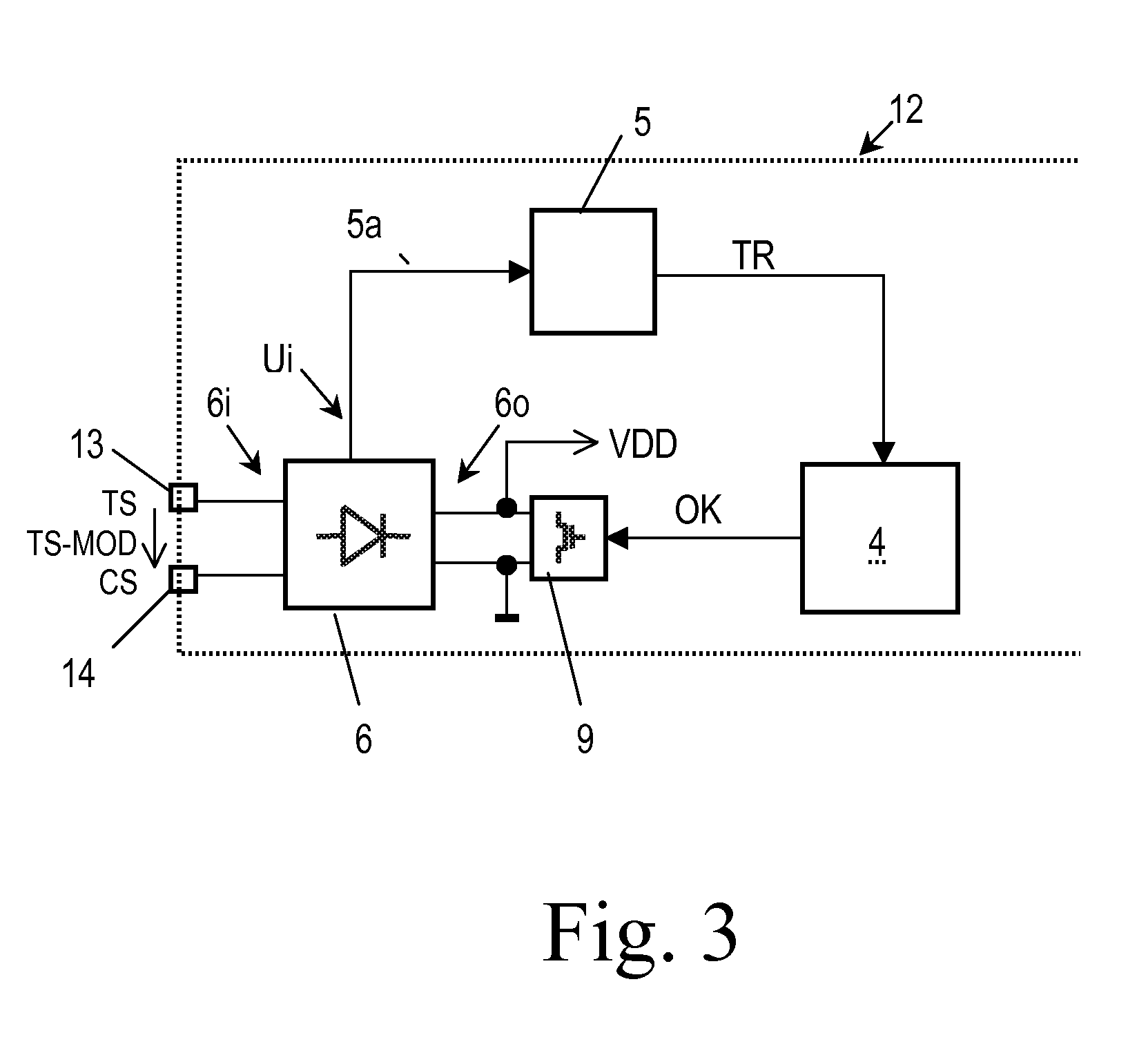Circuit and data carrier with radio frequency interface
- Summary
- Abstract
- Description
- Claims
- Application Information
AI Technical Summary
Benefits of technology
Problems solved by technology
Method used
Image
Examples
Embodiment Construction
[0022]FIG. 1 shows a schematic block circuit diagram of a general embodiment of a data carrier 10 according to the invention, which data carrier 10 comprises an integrated circuit 12 according to the invention, wherein the integrated circuit 12 is positioned on a substrate 16. The data carrier 10 is configured as a passive transponder and comprises RF transmission means 11 in form of an antenna positioned on the substrate 16, which antenna is designed for receiving in a contact-less manner an electromagnetic RF carrier signal CS from a read / write station not depicted in the drawing. The carrier signal CS can, for instance, have a frequency in the range from a few kHz up to GHz.
[0023]The RF transmission means 11 are connected to the circuit 12 by means of a first circuit point 13 and a second circuit point 14, which may be configured as connection pads that are wired to the circuit 12. The connection pads may be configured as so called “gold-bumps”, i.e. raised contact-pads that are ...
PUM
 Login to View More
Login to View More Abstract
Description
Claims
Application Information
 Login to View More
Login to View More - R&D
- Intellectual Property
- Life Sciences
- Materials
- Tech Scout
- Unparalleled Data Quality
- Higher Quality Content
- 60% Fewer Hallucinations
Browse by: Latest US Patents, China's latest patents, Technical Efficacy Thesaurus, Application Domain, Technology Topic, Popular Technical Reports.
© 2025 PatSnap. All rights reserved.Legal|Privacy policy|Modern Slavery Act Transparency Statement|Sitemap|About US| Contact US: help@patsnap.com



